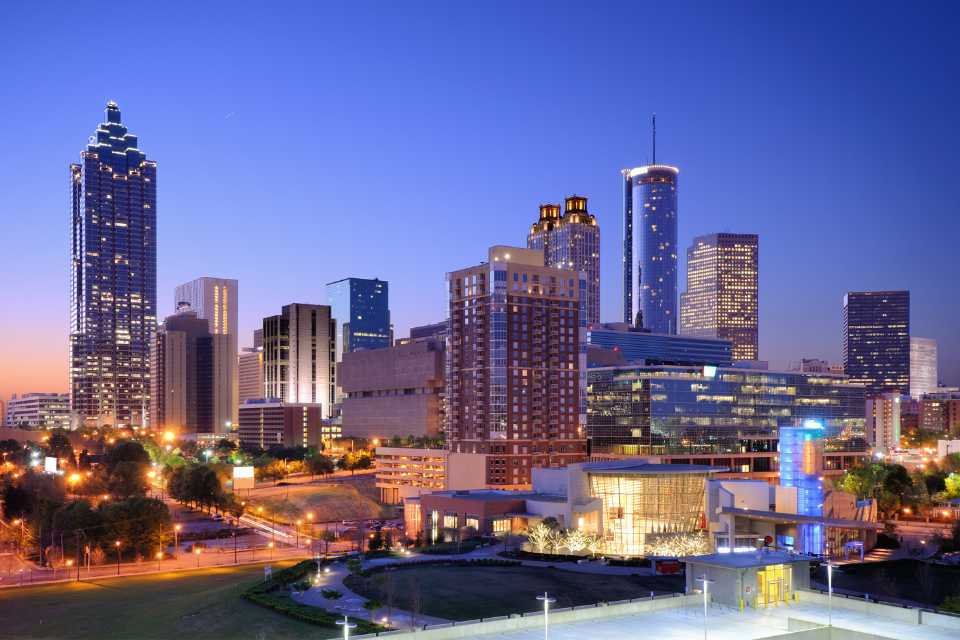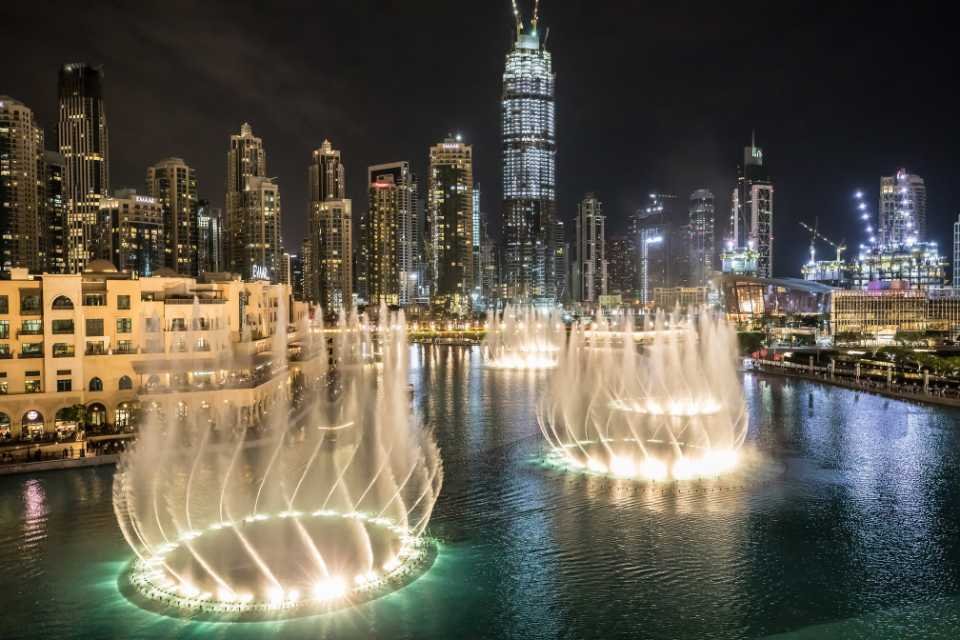15 unmissable places to visit in Memphis, Tennessee
Our 15 favourite landmarks and attractions in Memphis
One of those American cities that claims to be the centre of the world when it comes to music, Memphis’ claim isn’t too far-fetched. From the blues clues of Beale Street that hosted names like B. B. King to the spiritual home and final resting place of Elvis Presley, Graceland, the city seems to bounce with some sort of beat 24 hours a day.
But beyond the soundtrack is a city packed with amazing history, quirky traditions and museums, gardens, parks and much more. Dive into our list of the 15 best things to check out in Memphis.
1 of 16
Memphis Rock 'n' Soul Museum
Memphis, Tennessee is often referred to as the birthplace of rock and roll, so any trip to the city wouldn't be complete without visiting the Memphis Rock 'n' Soul Museum. The collection, which began as a study at the Smithsonian, delves into not only the music but also the artists and the economic and racial tensions that inspired them.
2 of 16
Sun Studio
Sun Studio is a cultural and historical landmark in Memphis, Tennessee, and is universally recognised as the spot where rock and roll was first performed. In 1951, when it was still known as the Memphis Recording Service, this is where the first rock single, "Rocket 88," was recorded. Music history, immortalised by the likes of Elvis and Johnny Cash, and rare artefacts make this former recording studio a must-see for any visitor to Memphis.
See Sun Studio on a guided tour of Memphis, which includes stops at key music landmarks in the city as well as entry to the recording studio.
3 of 16
National Civil Rights Museum
The cultural and historical significance of the National Civil Rights Museum, constructed around the site of the former Lorraine Motel where civil rights leader Dr. Martin Luther King Jr. was assassinated in 1968, is evident to all who enter. Displays cover pivotal moments in the Civil Rights Movement, such as the Brown v. Board of Education decision, the Little Rock Nine, the Montgomery Bus Boycotts, and the well-known sit-ins of the 1960s.
4 of 16
Memphis Music Hall of Fame
Memphis, often called "the musical heart of America," is home to several museums and landmarks that pay homage to the city's role as a crossroads of cultures that gave rise to the rhythm and blues genre. The Memphis Music Hall of Fame honours local musicians, both well-known and lesser-known, and is located on the second floor of a building that also houses the Hard Rock Café Memphis and a retail outlet for Memphis clothing manufacturer Lansky Bros.
The museum serves as the administrative hub for the city's annual blues, soul, and rock music hall of fame induction ceremony, which takes place elsewhere each year and has previously honoured such luminaries as Al Green, Justin Timberlake, Johnny Cash, David Porter, Elvis Presley, and B.B. King.
5 of 16
Stax Museum of American Soul Music
Travel back in time and learn about the evolution of soul music at the former Stax Records studio, now known as the Stax Museum of American Soul Music. The museum traces the history of a landmark label in soul music and provides insight into the development of the genre in the United States. Explore the lives of musicians like Otis Redding and Aretha Franklin as you travel.
6 of 16
Beale Street
Artists flocked to Beale Street from the 1920s to the 1940s to work together, resulting in a new musical genre that fused jazz with rock and roll. Blues, a new and uniquely American musical genre, emerged from this fusion and made its way into the cultural mainstream of the United States over time.
Travelers can see the blues clubs that gave rise to some of the most famous American blues musicians of all time by paying a visit to modern-day Beale Street, which is now a U.S. National Historic Landmark District.
See all of Beale Street’s important places and learn more about the history of this important Memphis thoroughfare on a guided walking tour of Beale Street.
7 of 16
Victorian Village
Grand mansions from the middle to the late 1800s line the streets of Victorian Village, a historic neighbourhood formerly known as Millionaire's Row. The Mallory Neely House, the James Lee House, and the Woodruff-Fontaine House are just a few examples of the Victorian mansions that have been transformed into museums, hotels, and even a nightclub.
8 of 16
Orpheum Theater
Photo credit: artistmac / Flickr
The Memphis Orpheum Theater, which opened in 1928, is one of the few remaining "movie palaces" from that era in the United States. The Orpheum was built on the site of the former Grand Opera House, which hosted vaudeville acts for nearly two decades. Through all of that, it managed to become the "South's Finest Theater," despite facing bankruptcy, demolition, and a fire.
Check the schedule and book tickets at the official Orpheum Theater website.
9 of 16
Woodruff-Fontaine Home
This historic residence, constructed in 1871, served as a focal point of the neighbourhood formerly known as Millionaire's Row. Tourists from all over the country flock there now to get a glimpse of the affluent's former lifestyle.
Amos Woodruff, the former owner of this beautiful home, was a well-known carriage maker, president of the city council, and mayoral candidate. Noland Fontaine, who owned the Woodruff-Fontaine home from 1861 until the late 1920s and ran the largest cotton business in the United States, will also be discussed.
10 of 16
Graceland
Graceland, once Elvis Presley's home, is the second most visited residence in the United States (after the White House). Although the rock 'n' roll singer and pop culture icon passed away in the white-columned mansion at the age of 42 in 1977, touring the eccentric rooms of this 17,552 square foot (1,630 square metre) estate gives insight into the mind of The King, who is buried in the estate's Meditation Gardens.
Do Graceland in style by taking an all-inclusive VIP tour of Memphis, including Graceland, Sun Studio and Beale Street, plus transfers.
11 of 16
Handy Park
There is a great outdoor concert and event space in Memphis, and it is Handy Park, a large public park with open fields and a stage. The "Father of the Blues," W. C. Handy, is honoured with a park bearing his name.
There is a monumental statue of W. C. Handy in the park. Even though they're always free and open to the public, events in Handy Park tend to draw sizable crowds due to their accessibility. Outdoor amphitheatre with seating for two thousand people makes this a popular hangout for those in the area.
12 of 16
A. Schwab
Photo credit: La Citta Vita / Flickr
The Memphis landmark and institution that is A. Schwab Dry Goods. When it first opened in 1876, the store only sold clothing and goods for men. Today, however, it sells nearly everything. Beale Street has lost all of its original stores except for this one.
The Beale Street Museum, housed on a small balcony above the first floor, complements the two floors of exhibits showcasing local arts and crafts as well as historical books, records, and artefacts.
13 of 16
Underground Railroad Museum
Read about the experiences of slaves in Tennessee over the course of several decades, and you'll get a sense of the full scope of slavery's impact on the United States' history.
Reading about the struggles of the freed black people, while looking at the places where they hid in their bids for freedom, is a powerful experience that can be had by visiting the museum, which is located on the site of part of the underground railroad. The street address of the structure in question is 2nd North.
14 of 16
Peabody Hotel
The Peabody Hotel is a luxury accommodation in the heart of Memphis. While the current, much larger and more luxurious Peabody Hotel did not open until 1925, its predecessor was constructed in 1869. It retains its former splendour and presents an air of refined elegance. The hotel's five mallard ducks live in the centrepiece duck fountain in the lobby. One of the best rooftop bars in Memphis can be found at this hotel, which is also conveniently located near many tourist hotspots.
15 of 16
Cotton Museum
For several centuries, the city's economy relied heavily on cotton. One time, Memphis was a major player in the global cotton economy thanks to the Memphis Cotton Exchange. Visitors to the Cotton Museum can learn more about the history and methodology of cotton production in the United States. It's fascinating to learn about this empire that left its mark on American culture.
16 of 16
Memphis Botanic Garden
The Memphis Botanic Garden spans 96 acres (39 ha), and features 23 distinct garden areas, including the My Big Backyard garden specifically designed for kids. The garden plays host to numerous community gatherings throughout the year.
Plant sales and the annual "Live at the Garden" concert series benefit the garden's educational and horticultural programmes, which include classes for both children and adults.
















